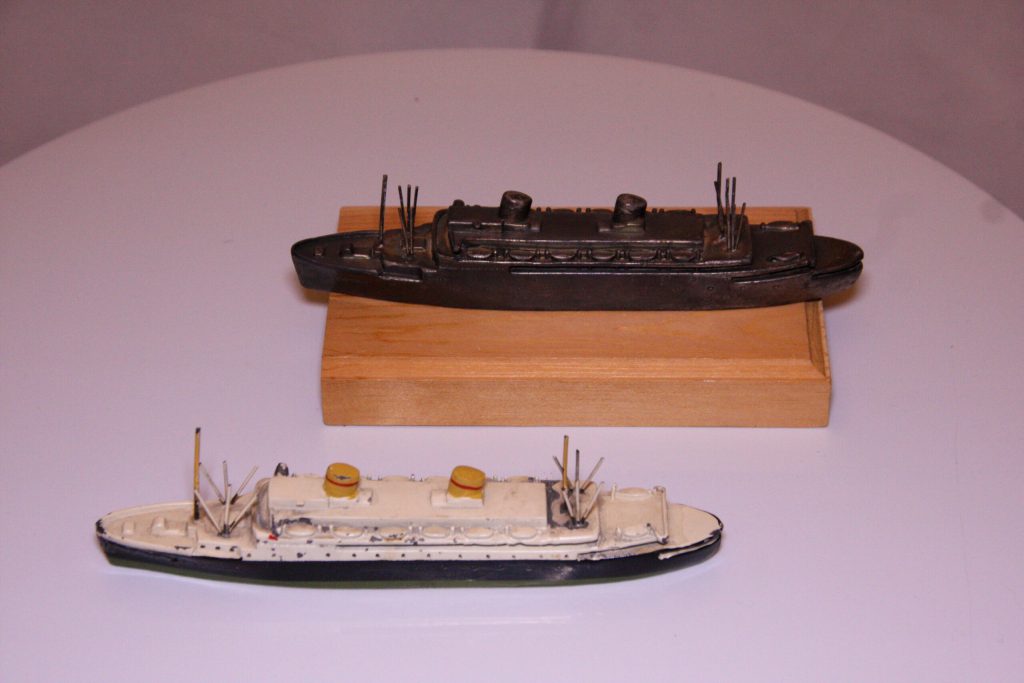These miniature ships are replicas of the sister ships Pilsudski (bottom) and Batory (top). They were luxury ocean liners operated by the Gdynia-America Line (GAL) and symbolized newly-independent Poland’s pride during the interwar period. Both ships carried Polish immigrants and wealthy travelers from the port of Gdynia in Poland to New York City. The Pilsudski could carry more than a thousand passengers and crew members. Known as the “Polish Titanic,” it sank in the North Sea in November 1939 shortly after the British navy had transformed it into a military vessel. Built in 1934-35 in Trieste, Italy, the Batory also served as a British military vessel during World War II. It survived the war and in 1951 became the flagship of the Polish Ocean Lines where she earned the reputation as the “Pride of the Polish Merchant Marine.” You can read more about the Pilsudski and Batory, and the historical figures after whom they were named, below.
Size: 5 inches in length, 1 inch in width, and 2 inches in height.
Provenance: Unknown
Born in 1867 Vilnius in Russian-controlled Poland, Józef Pilsudski was a Polish revolutionary who spent much of his career fighting to free Poland of Russian control. In 1918 he became the first head of state of the Second Polish Republic. After briefly retiring in 1923, he returned to power in a coup in 1926. Refusing the office of President, he served as Minister of Defence until his death in 1935. The GAL’s Pilsudski was named after this Polish hero and her first voyage took place in September 1935, just four months after her namesake’s death.
Stefan Batory served as King of Poland and Grand Duke of Lithuania (1576-1586). Despite his short reign, he is considered one of Poland’s most successful kings because of his military victories. During the Russo-Polish War of 1577-1582, he defeated the army of Ivan the Terrible and captured the Duchy of Livonia. The MS Batory is named after this king and is subsequently the most famous Polish ocean liner for her grandeur, as well as for her service in World War II. She also transported immigrants after the end of the war, and was later scrapped in 1971.
Author: Natanya Furgal, History major, Elms College.
